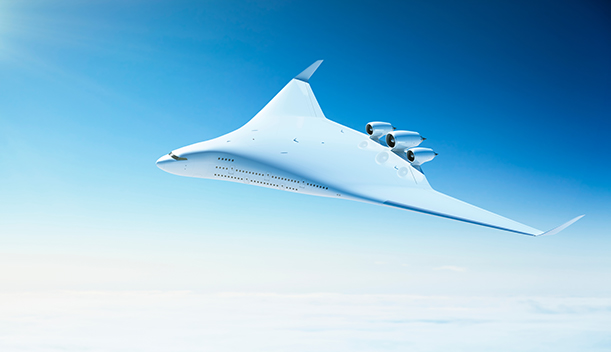The future of flying
Innovations have long been a feature of aviation technology. With the pace of change increasing, digital developments promise an exciting transformation in air travel for passengers.
Biometric checks
The air traveller of the near future will be able to browse shops and make purchases using smartphone-enabled airport loyalty apps. Eligibility into an airline lounge will be confirmed biometrically. The airline’s smartphone app informs you which number and what time you need to go to the gate.
Interior innovations
Looking around the aircraft, passengers will see a visibly different interior to the aircraft of today. While there will still be the luggage bins above seats, the ceiling will uniformly provide cabin lighting, perhaps in a cool, calming blue.
Internet access
Once seated, passengers might immediately turn on the in-flight entertainment and watch live television or choose films and TV programmes. Mobile devices connect seamlessly with the onboard Internet, and passengers will use them during take-off and landing.
In-flight entertainment
Why watch a film on a screen that, even in first class, won’t be much larger than 64 centimetres? In the future, virtual reality would enable you to be in a movie theatre or a sports match in a huge stadium. The VR content available could be a driving video game or flying over the planet Mars. If the entertainment is limited to the two-dimensional screen, live television from anywhere in the world could be available
Greener flying?
Aircraft can be made more environmentally friendly by improving the engines and improving the aerodynamics of the aircraft. No windows are one way of improving the aerodynamics, another is to change the aircraft into a flying wing. The engines can more efficiently ingest the air they burn with the fuel for jet propulsion by locating them elsewhere on the aircraft. The engines can also be replaced by battery-driven propellers.
A more personalised service
This vision of future air travel is one of a personalised service provided to the billions of air travellers that will fly every year. It is, however, predicated on better airport design, smooth digital communication between traveller, airport and airline, and the crunching of big data to streamline transportation operations. While a handful of the innovations are familiar to some of today’s travellers, much of the technology is still yet to be widely deployed or is still in development.
Greener aircraft
In 20-years time, short-haul aircraft will use propellers, but they will face backwards or there could be more than four of them. These propellers will not use a jet-fuel-guzzling turbine to power them, rather an electric battery. For long-haul journeys, there will be a greater use of electricity on board, but jet-fuel burning engines will still propel the aircraft while generating the electrical power needed. And the jet fuel will be from a renewable carbon neutral source, such as sea water algae.




